Toilets And Bathroom in Medieval England and France

Du Barry’s Bathroom
The Delights of Bathing In the Royal Palaces of France
From the 17th century, royal members in France palaces enjoyed the delights of bathing. Royal members and their designers had a huge number of ideas to satisfy the using and feeling experiences. However, the trends of bathing were changing rapidly. The bathrooms and tubs were built, demolished, and renewed, again and again. And kings spent a significant number of labor, wealth, and time on the design of bathrooms. That’s one of the reasons that led to the Revolution in France.
Louis XIII’s Bath Tub

Louis XIII
Louis XIII didn’t spend a lot on bathing compared to other kings in France.
He used an ordinary wooden tub for most of his lifetime. In his last days, he replaced the wooden tub to a marble one. The marble tub is grander with a cold reception to the rump, which gave a totally different using experience with wooden tubs.
Moreover, the submerged cushions and drapings trimmed with lace that Louis XIII used became the popular outfits in the court circles. (Wright 98)
Louis XIV’s Bathroom
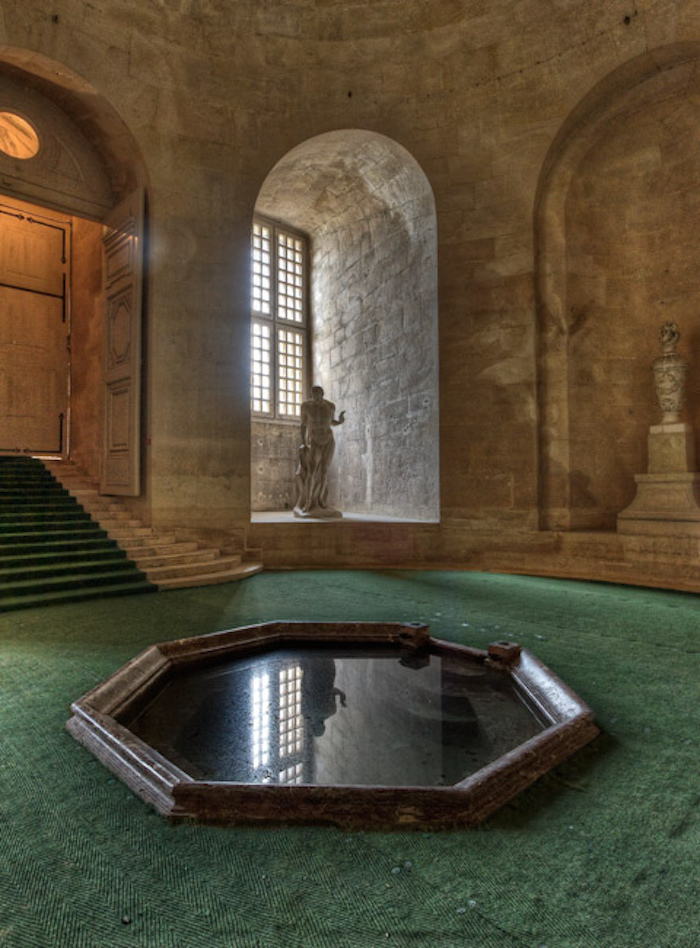
Louis XIV’s Bath Tub
As the incarnation of the Sun God, Louis XIV showed his interest and passion for bathing. From 1677 to 1679, Louis XIV renewed the bathroom for three times. In 1679, there were six tubs in the bathroom. Some of them were made of marble, and the others were with bronze ornaments. At the same time, he enlarged the suite of the bathroom and made a monumental rose-pink octagon bath tub. (Wright 98)
The delight of bathing seems like a symbol of status. Not only the gorgeous ornaments in the bathroom, Louis XIV also spent a large number of labour on bathing. When he was taking a bath, there were a number of staff to take care.
Fortunately for the staff, most of the time, he didn’t use this monumental bathroom. Instead, he had a little bath in his bedroom.
Louis XV Moved The Bathtub To The Garden
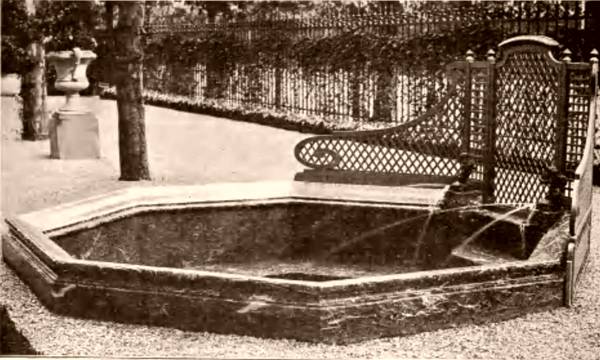
The bathtub in the garden
Louis XV removed the great bath to the garden as a garden fountain.
That is not an easy job. Twenty-two men were needed to move the bath on the level and rollers. And this might become a seed of the Revolution that day among the sweating workers. (Wright 98)
The great bath, firstly built interior, and then moved to the exterior as a garden fountain, and then returned to the Versailles and set up in the Orangery. These workers were too tired to satisfy the delights of bathing.
Enthusiasm of Bathing In The Court
There are a lot of rumors that royal members didn’t like taking a bath, and they took a bath every month. However, the court was much cleaner than people thought. There were more than a hundred bathrooms at Versailles. (Wright 99)
River bathing is also a popular way to take a bath. Even when taking a river bath, the court still was concerned with the using experience. The Duchess of Burgundy built a leafy screen along the bank and two pavilions as well, with a banquet and music. And if the river was too cold, staff would pour boiling water into the river to raise the water temperature.
During the Louis XV period, another trend is the bathroom with two baths, one for washing and one for rinsing. (Wright 100)
Distinguishing Gender of Garderobes
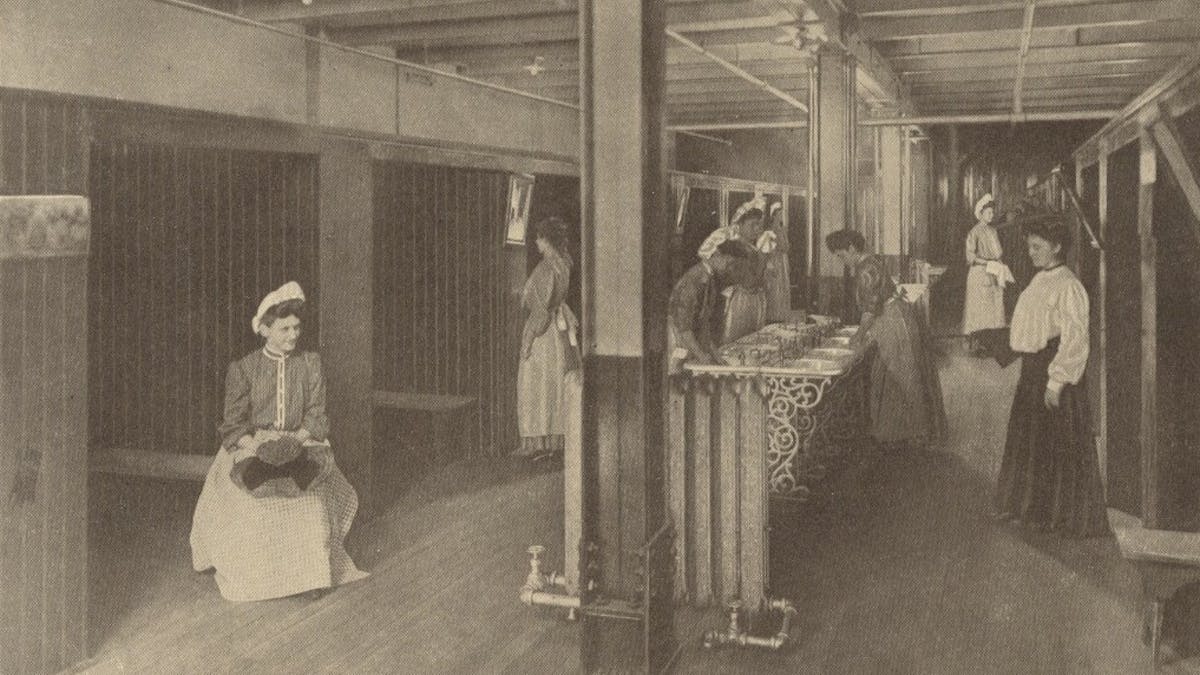
Ladies’ Toilets
In the report of a great Ball in Paris in 1739, people started to distinguish “ladies” and “gentlemen” on the garderobes. There were ladie’s garderobe and gentlemen’s garderobe separately with inscriptions over the doors of the cabinets. Moreover, chambermaids and valets cleaned ladies’ and gentlemen’s separately as well. (Wright, 103)
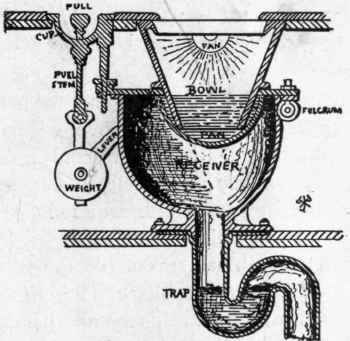
Pan Closet
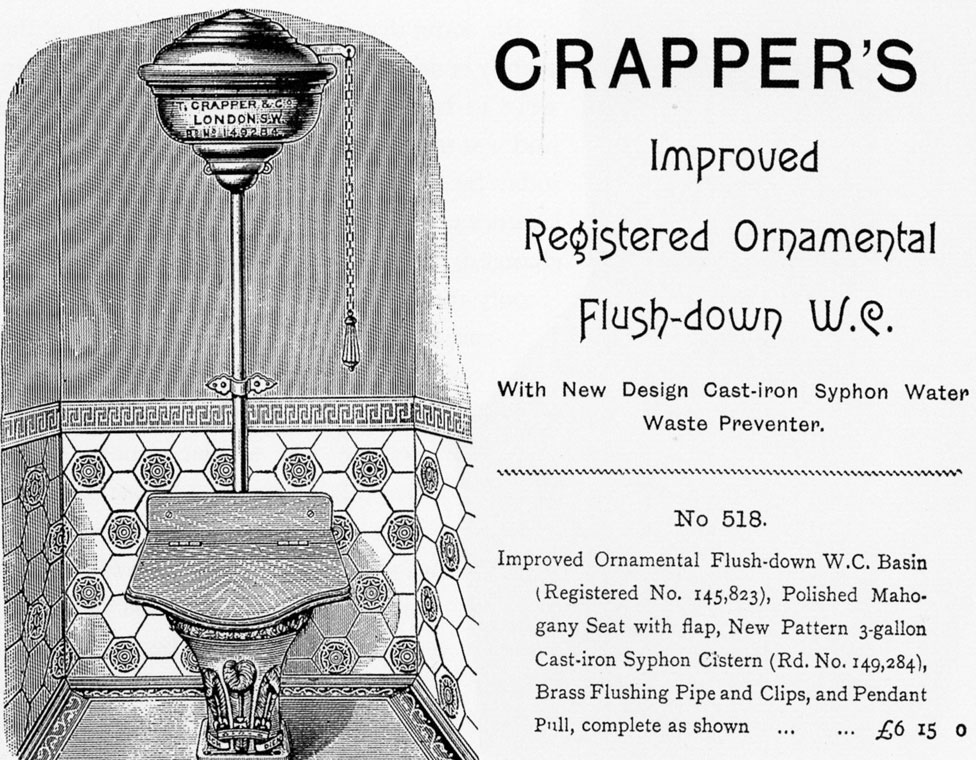
Advertisement of Flushing Toilets
Flushing Toilets in 18th Century England
In the early 18th century, the flushing toilet was a novelty and extremely new to the citizens even to the nobles. At the beginning, it has been a self-operating intermittent flushing device, and it is not operated directly by the users. (Wright, 103)
According to the records and schedules of plumber, in 1734-1747, the architects considered the cisterns to support water usage in the whole building, but not mentioned the cesspool and flushing toilets at all. From the middle period of the 18th century, architects started trying to design the underground sewage systems and putting toilets indoors. A plan of underground sewers and drains of “The Bog Houses” was recorded in Issac Ware’s A Complete Body of Architecture gave a try of an underground sewage system, even though none of them is indoors. Then, the examples of piped water and drainages appeared. But they are still seen as curiosities in England at that time.
During the 19th century, the indoor flushing toilets and underground sewage system rapidly innovated. Pan closet is one of the most well-known flushing devices at that time. (Wright, 106) And people continued developing the flushing closet to have better using experience and convenience. Companies found huge commercial opportunities, and the patent about flushing toilet appeared as well.
Bibliography
- Wright, Lawrence. Clean and Decent: The Fascinating History of the Bathroom & the Water Closet and of Sundry Habits, Fashions & Accessories of the Toilet Principally in Great Britain, France, & America. Routledge & Kegan Paul, 1960. Ch. 8
Image Resources
- https://www.historyextra.com/period/medieval/did-medieval-people-take-baths-why-they-were-cleaner-than-we-think-middle-ages-hygiene-handwash-washing-cleanliness-coronavirus-plague-covid/
- https://www.messynessychic.com/2019/01/11/the-legend-of-the-sun-kings-perfume-bath-at-versailles/
- https://commons.wikimedia.org/wiki/File:%27Louis_XIII,_King_of_France,_with_the_Sash_and_Badge_of_the_Order_of_Saint_Esprit%27_by_Frans_Pourbus_the_Younger.jpg
- https://chestofbooks.com/home-improvement/construction/plumbing/Household-Sanitation/Latrines-Part-2.html
- https://theconversation.com/how-did-public-bathrooms-get-to-be-separated-by-sex-in-the-first-place-59575